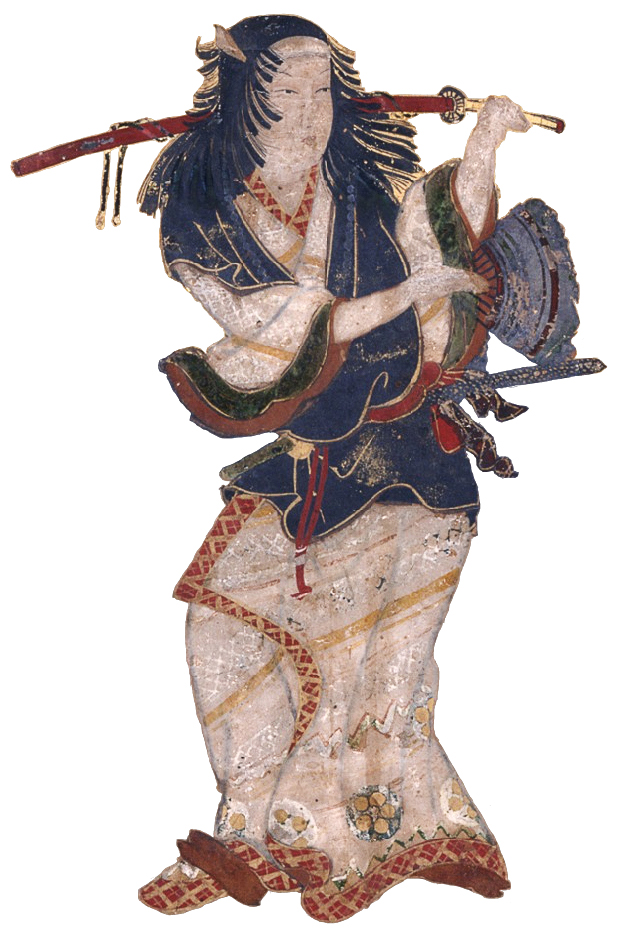 |
| Izumo no Okuni |
There was a small stage set up on the other side of the street with actors wearing bright makeup and vibrant silk kimonos performing a play. A theatrical backdrop stood at the rear of the stage with a walkway that extended out towards the audience. The scene appeared to be a restaurant patio. There was a low dining table with female performers knelt down pretending to eat supper. A small band was playing a musical accompaniment off to the side of the stage. There was an older man playing a flute and a teenage boy playing a samisen. Another man held two wooden blocks that looked like large door stops. During various moments in the performance he would clap them together to create cues that even the audience reacted to by clapping or cheering.
“What kind of play is that?” asked Kyla. She was mesmerized by the outlandish white face paint and overly dramatic posturing by the actors.
“It’s Kabuki,” said Sadako. “You’ve never seen a Kabuki play?”
“No. Those women look creepy.” Kyla was staring at the thick women in their pink and green kimonos with cherry blossoms in their jet black hair. Their faces were white as snow and their lips were as red as blood.
“Ha! Those aren’t women, Kyla,” said Sadako. “Those are men.”
--from Time Trip #4: Killing For Country
Available at Amazon.com! The Kabuki art form was created by Okuni, a female shrine attendant in the 17th century. Originally preformed in the dry bed of the Kamo river. Okuni, dressed in mens clothing and a christian rosary, preformed scenes of assignations with prostitutes. Kabuki, originally meaning "tilted" or "off-kilter", is now written with the three japanese characters music, dance, and craft or skill. During this time Kabuki was frowned upon for its immoral content in the confucian orientated culture of the time. So in 1629 the Tokugawa banned women from preforming in the style.
Kabuki plays are about historical events, moral conflicts, love relationships and the like. The actors use an old fashioned language which is difficult to understand even for some Japanese people. Actors speak in somewhat monotonous voices accompanied by traditional Japanese instruments. The costumes of the performers usually held the family crest of the actor, giving honor to the family.
TIME TRIP ADVENTURE 4
KILLING FOR COUNTRY
Available at Amazon.com!
TIME TRIP ADVENTURE 2
A RIDE ON THE UNDERGROUND RAILROAD
TIME TRIP ADVENTURE 3
WITNESS TO THE FIRST THANKSGIVING




Glad you enjoyed the post!
ReplyDelete